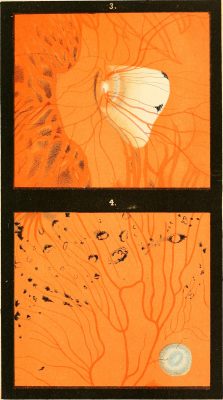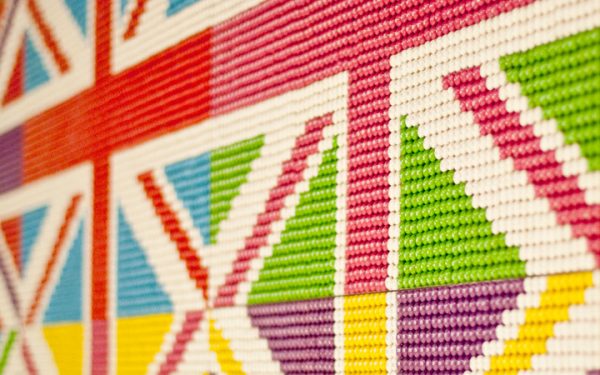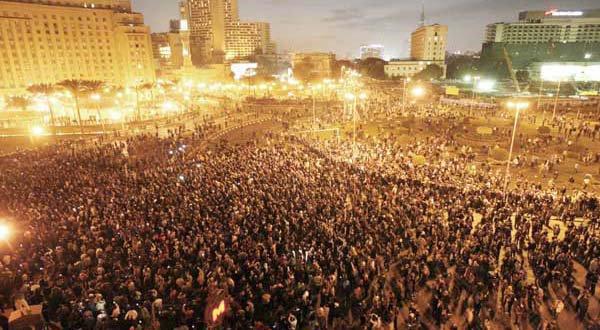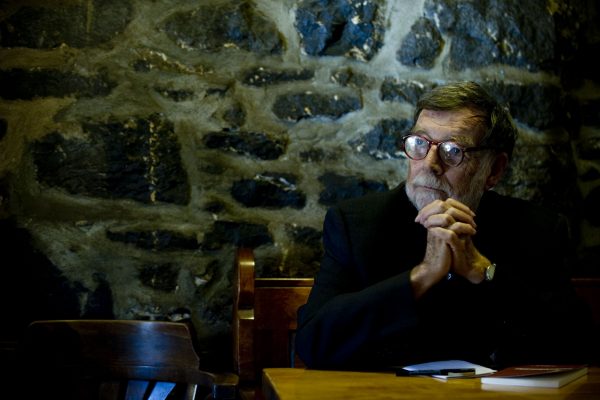In his foreword to A Thousand Plateaus, on the pleasures of philosophy, and of Deleuze and Guattari’s philosophy in particular, Brian Massumi writes:
[A] plateau is reached when circumstances combine to bring an activity to a pitch of intensity that is not automatically dissipated in a climax. The heightening of energies is sustained long enough to leave a kind of afterimage of its dynamism that can be reactivated or injected into other activities, creating a fabric of intensive states between which any number of connecting routes could exist.
The trick to reading Mille Plateaux is that you can drop in anywhere and read for a while; though ideas accumulate and diversify across its pages, the book doesn’t require a chronological or teleological reading experience.
Maria Gainza’s is-it-a-novel Optic Nerve can also be read either way. The book is comprised of discrete, self-contained chapters that resemble short stories, or essays. There is no plot, only narrative, only motifs. If you were to read Optic Nerve start to finish, you would observe how skilfully Gainza braids together the narrator’s musings on life, the self, family, friends, and, above all, art. But once you’ve read it straightforwardly, I recommend going back and reading it unstraightforwardly. You could dip in anywhere and still get something out of it. Like Mille Plateaux, it is a root-book.
The narrator, Maria, is an Argentinian art historian (she shares a name and an occupation with her author), and much of the text is given over to her ruminations on art and the preoccupations of artists that drove them to make the work they did. The work she considers is mostly pre-twentieth-century, with the exception of Mark Rothko, and mainly to be found in the museums of Buenos Aires, as the narrator is afraid of flying (‘Buenos Aires, they say, only has second-rate work: great artists, yes, but none of their great works’). The person who really knows how to look at art doesn’t need to look at the acclaimed works; she can find the masterpiece in the minor piece, the ‘beautiful shocks’ that democratise the field of an artist’s output.
Optic Nerve requires its reader’s attention; there are so many stories within stories that it’s easy to lose track of where you are. A story about fleeing an ash cloud in Buenos Aires becomes a story about the artist Cándido López, which links up with a story about the Victorian explorer Richard Francis Burton which becomes another story about the narrator’s husband’s ex-father-in-law. A story about her best friend from adolescence emerges from a story about the painter Axel Amuchástegui emerges from a story about the Japanese painter Foujita. The aesthetic of ukiyo-e floats from the Foujita sections to later sections on Toulouse-Lautrec and the japonisme that inspired him, the ‘blocks of black, oblique angels, the sinuous lines of the figures’. The power of the double recurs across the chapters, from Maria’s childhood affliction of diplopia (seeing double), to the doubling of friendship, to the doubling of pregnancy. There are two Marias (the narrator and her cousin), two Toulouse-Lautrecs (father and son), reproductions of Rothkos, the struggle with the self.
But charting these pathways doesn’t capture the organicity of these stories, the way matter builds up between them, so the courses they take never feel arbitrary. There is always a relationship between the tree and the soil it grows from. ‘You write one thing in order to talk about something else,’ Gainza notes. Gainza is deeply interested in the power of vision, and how this fuels the way we look at art — and, implicitly, the way we read. ‘All of art,’ she writes, ‘rests in the gap between that which is aesthetically pleasing and that which truly captivates you. And the tiniest thing can make a difference.’ The writing, rendered in translation by Thomas Bunstead, is crystalline and fluent, and Gainza’s eye for detail, ekphrastic or otherwise, is sublime: the ancient trees on a French estate have been fitted with metal girders to keep them upright, ‘giving them a stooped look, like giants on crutches’; the city as the ash cloud descends becomes ‘a painting in grisaille’; watching her boyfriend and his friends surf, she notes that ‘in their black neoprene, through the constant sea mist, they looked like wolves of the water’.
As the title suggests, Optic Nerve is a book about the sentient eye, an organ that can be stimulated in a physical way. ‘I had only to set eyes on the painting and a sensation came over me: you might describe it as butterflies, but in fact for me it’s less poetic.’ That is to say, get a grip on your lyricism; we’re in the realm of the physical, the chemical: ‘It happens every time I feel strongly drawn to a painting. One explanation is of dopamines being released in the brain, and the consequent bump in blood pressure throughout the body’. Later, observing the effects of Velázquez on innocent schoolchildren, she encourages caution with an educational approach to art: ‘Carelessly administered, the history of art can be as lethal as strychinine.’ She attributes to art powers to thrill and sicken and consume. (In the 2018 film Velvet Buzzsaw, which by coincidence I’ve just been watching on Netflix, the art is actually killing people, hands reaching out from canvases to throttle, like Dorothea Tanning’s 1973 Inspiration Comes in Painting in reverse.)
Because this is a novel and not a theory of art, Gainza doesn’t prod at the implications of these powers. Is she suggesting that what gives her the ‘jolt’ in a piece of work is something inherent to the work — to the genius or talent or accidental achievement of the painter — or is it specific to her own eye’s engagement with the piece? I wondered if her jolt had anything in common with Barthes’s ‘punctum’, which pricks me but may not prick you. Sometimes we’re drawn to a work because it mirrors something for us — ourselves, a bad memory, a good memory, a memory we’d like to create (also known as a dream). In an interview with La Nación, Argentina’s leading conservative newspaper, Gainza said:
I really do not have the slightest idea how I write or what my strengths are. The only thing I recognise as my ally is intuition. […] It is a game of reflections, like the labyrinth of mirrors of the Italpark; sometimes I do not even know how to get out. Fuzzy reflection, I think it’s called.
(Italpark was an Argentinian theme park that closed down in 1990 when a fifteen-year-old girl was killed on a ride called the Matter Horn. Likewise, the world of Optic Nerve is a brutal universe — one friend is killed by a stray bullet on a French estate bordering a hunting reserve; a young woman slowly loses her mind and hangs herself; a young mother dies in a ‘freak car accident’.)
This power to mirror remains one of the strongest themes in the book. In one chapter, the narrator is struck by an uncanny resemblance between herself and a Schiavoni portrait. It is eerie, supernatural, it confronts the narrator with her past self at a particularly difficult moment in her present life. ‘I know, I know,’ she writes, ‘this is about as far from hard-nosed criticism as you can get, but isn’t all artwork – or all decent art – a mirror? […] Isn’t theory also in some sense always autobiography?’ The narrator is similarly struck by a painting by Gustave Courbet: ‘Every time I look at it,’ she writes, ‘something inside me becomes compressed, a sensation between my chest and my throat, like a small bite taken out of me. I have learned to respect this twinge, to pay attention to it, because my body always works things out before I do. Only afterwards does my intellect draw its conclusions.’ Her body works things out before she does, as if she is a step behind it: she calls what she felt for the Courbet painting an ‘infatuation’, a ‘twinge’. When I saw my first Courbet, a self-portrait, I felt a similar, explicitly sexual twinge: looking at the one with the pipe from 1848-49 I can see my teenage self mesmerised by his insolence. I’m reassured to learn from Gainza that the great art critic Peter Schjeldahl agrees; he has written ‘about seeing a Courbet and being gripped by the urge to go off running down the streets, to incite the people, to have sex, or to eat an apple. The viewer is sent into a pictorial fever.’
It is tempting to catalogue the other writers whom Gainza resembles. There is something Sebaldian in the linking of improbable anecdote, history, and artefact. There is something of Claire-Louise Bennett’s Pond in the way these short narratives route us back to the same first-person female narrator, and of Chloe Aridjis in the wry, even tone, the attentiveness to art and the spaces in which art is shown. In the way the narrator blends together her own stories with those of the people (dead and alive) she encounters, there is something of Rachel Cusk’s recent trilogy — except that Optic Nerve was first published in 2014, the same year as Outline.
This suggests to me that the ‘struggle with the self’ which Gainza identifies as the experience of looking at El Greco is also the experience of writing fiction at this moment in time, and the reason behind the current flourishing, in English, of autofiction, a genre which was codified in France in the 1970s and had its peak there, for different reasons, in the 1990s. Cusk and Sheila Heti have expressed their impatience with making up characters, making them do things. In our post-postmodern era of fake news and fake populists arguing for the preeminence of fictional collectives over unknown and unknowable others, we have to grapple with ourselves, like Jacob wrestling the Angel (another touchstone of this genre), interrogating all the things we think we are sure of, challenging the constructions that some would have us believe are natural occurrences.
Deborah Levy has written that she has no time for works of fiction whose ‘mind is closed’, which ‘cannot tolerate doubt’. Optic Nerve — like the works that spark something for its narrator — is not this kind of book. It is an open mind, recording the atoms as they fall; if there is doubt, it is tolerated precisely because it lives in those searing moments of confidence, perception, and vision.




